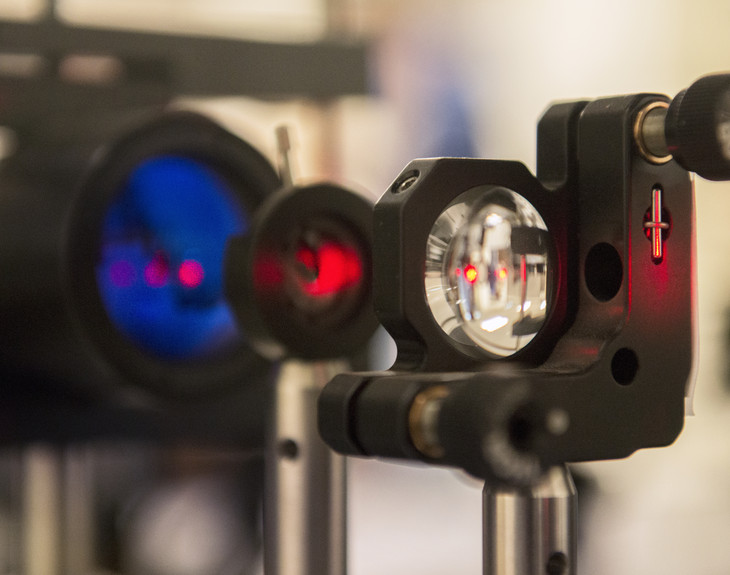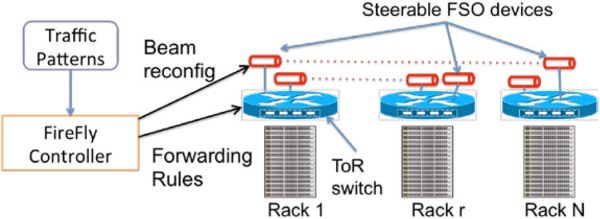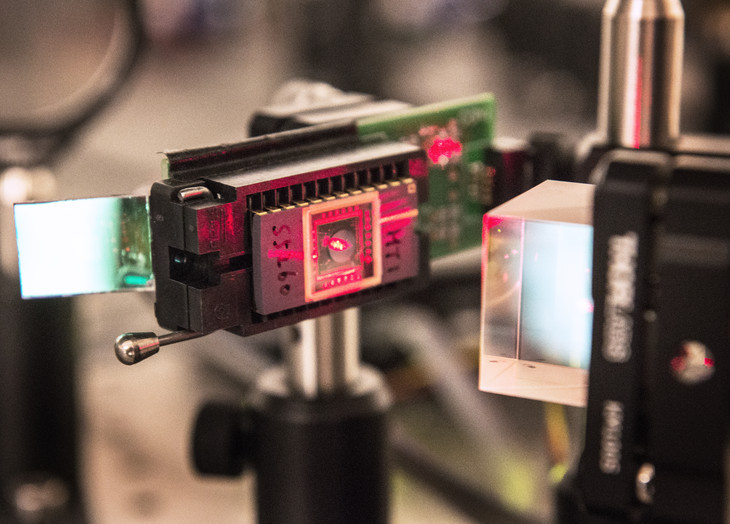Infrared optics instead of optical fiber in the data center: the original project of engineers from the United States

A group of US developers proposed replacing the fiber in the data center with infrared transceivers. According to them, this does not require too expensive elements, and such systems will take up little space in the data center. In modern data centers, more and more wires are used that unite both individual servers and entire network systems. A lot of wires often cause inconvenience, although some data center operators deal with this problem very well.
So, a group of US engineers, many of whom work at the University of Pennsylvania (USA), created a system of transmitters and receivers of IR waves specifically for data centers. In principle, this is not the first attempt to get rid of wires in the data center, but previous development projects were not received due to a number of problems. One of the main ones is defocusing when the distance between the receiver and transmitter is increased. Data centers are now quite large, so it was not easy to solve this problem. But the current project team did it.
The results of their work, representatives of the University of Pennsylvania said at the conference Photonics West 2017. They used optical systems (lenses) with a low price. Nevertheless, the authors of the work learned how to receive infrared rays with a virtually zero level of interference, even with the help of such equipment. The capacity of the "heat network", according to representatives of the project team, is high, although they have not stated the exact parameters. There are no restrictions on the number of compounds.
')
Novelty called Free-space optical Inter-Rack nEtwork with high FLexibilitY (Firefly). It has a unique architecture, which is based on the results of previous projects, as scientists from the University of Pennsylvania, and specialists from Carnegie Mellon University and New York University.

To make Firefly work, you need to install special modules at the top of the server racks: infrared lasers and receivers. The configuration of the modules can be quickly changed as well as targeted at any of the racks of the data center. The receiver, receiving an infrared signal, sends it to the fiber-optic cable. And already by cable data is sent to the desired server or network device. According to the developers, Firefly requires almost no maintenance and is able to work in automatic mode for a long time.

Receivers and emitters are positioned using miniature servos. Also, if necessary, you can change the direction of the mirrors of microelectromechanical systems. The diameter of such mirrors is only 2 mm. The power consumption of the microelectromechanical system is less than 1 mW.
The system in question is not at all handicraft; it can work inside the data center with tens and even hundreds of thousands of servers. The more servers in the data center, the more cables are required. Features of data center infrastructure lead to the emergence of "bottlenecks" with reduced bandwidth. If you use an infrared data transmission system, problems of this kind do not arise. In any case, so say the developers.

As for the tests in the "field", Firefly has not yet been tested in working with a large number of servers. So far there is only a prototype of a small-scale system that works without any problems. As part of this system, engineers have demonstrated the transmission of a bidirectional data stream at a speed of 10 Gbit / s. The level of errors is low and does not exceed the norm. As for the laser wavelength, it is 1550 nanometers - this is exactly the radiation wavelength in most fiber-optic systems.
Source: https://habr.com/ru/post/322176/
All Articles